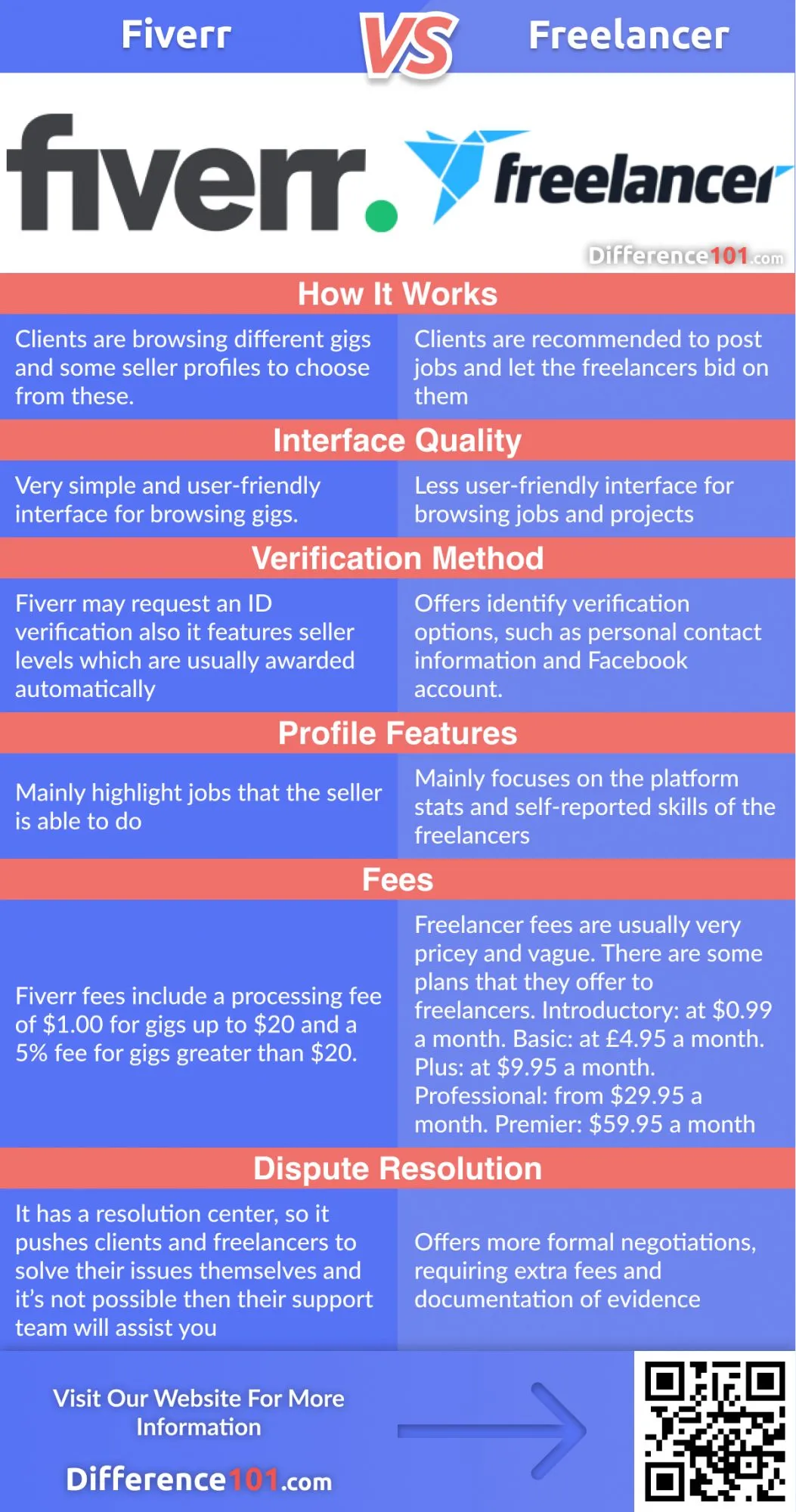Fiverr, a platform that revolutionized how freelancers and clients connect, has greatly influenced the gig economy. As we delve deeper into its journey, many are asking: "Is Fiverr dying?" This blog post will provide an in-depth analysis of Fiverr's history, its current state, and where it might be headed. We'll examine the challenges it faces in today's rapidly changing freelance marketplace, shedding light on both its breakdowns and breakthroughs.
The Rise of Fiverr: A Brief History

Fiverr was founded in 2010 by Micha Kaufman and Shai Wininger, born out of a vision to create a marketplace connecting talent with opportunity. The concept was simple: freelancers could offer services starting at just $5—hence the name "Fiverr." This innovative approach opened up freelance work to countless individuals, allowing them to monetize their skills in a flexible manner. Let's take a look at some pivotal moments in Fiverr's journey:
- Launch (2010): Fiverr debuted with a focus on micro-services, enabling sellers to offer various tasks, from graphic design to writing.
- Rapid Growth (2012-2015): The platform quickly gained popularity, with millions of transactions taking place. It attracted the attention of venture capitalists, raising $30 million by 2013 to scale operations.
- Service Diversification (2015): Fiverr expanded its offerings, allowing services beyond the initial $5 framework, thus introducing various pricing tiers and better accommodating complex projects.
- Rebranding (2017): In an effort to modernize and redefine its image, Fiverr revamped its website and marketing strategies, attracting a broader audience and enhancing user experience.
- IPO (2019): Fiverr became a publicly traded company, further solidifying its position in the gig economy and providing additional resources for expansion and innovation.
From its humble beginnings to becoming a key player in the freelance marketplace, Fiverr's rise is a story of ingenuity and adaptability.
Also Read This: How to Make Money Using Fiverr
Current Trends in the Freelance Marketplace

The freelance marketplace has evolved significantly over the past few years, influenced by technological advancements, changing work preferences, and the global economy. Here are some key trends that are shaping the industry:
- Remote Work is Here to Stay: The pandemic accelerated the shift toward remote work. Many businesses have embraced this model, leading to a surge in demand for freelancers who can operate from anywhere in the world.
- Increased Specialization: Clients are looking for freelancers with niche skills. Whether it’s graphic design, digital marketing, or web development, specialized talents can command higher rates and enjoy more job security.
- AI and Automation: Tools powered by artificial intelligence are changing how freelancers operate. From project management to content generation, freelancers are leveraging AI to enhance productivity and deliver higher quality work.
- Flexible Payment Models: There's a growing trend in diverse billing structures. Freelancers are exploring hourly rates, project-based fees, and retainer agreements, allowing them to choose what works best for their services and client relationships.
- Global Competition: Platforms like Fiverr attract talent from around the globe, increasing competition. This trend pushes freelancers to continuously upgrade their skills and differentiate themselves to attract clients.
These trends indicate that the freelance marketplace is not just thriving; it’s also evolving. Understanding these shifts can help freelancers adapt and flourish in an ever-changing landscape.
Also Read This: Understanding How a Freelance Writer Earns Money
Major Challenges Facing Fiverr

While Fiverr remains a prominent player in the freelance marketplace, it faces several significant challenges that could impact its future. Let’s dive into these hurdles:
| Challenge | Description |
|---|---|
| Increased Competition | With more freelance platforms emerging, Fiverr is contending with this influx. Competitors are often willing to offer lower fees or better features, which can draw clients away. |
| Quality Control | As the number of freelancers on the platform grows, maintaining a consistent level of quality becomes challenging. Poor experiences can drive clients to seek services elsewhere. |
| Service Fee Hikes | Fiverr's commission structure has faced criticism, especially with service fees increasing for both freelancers and clients, potentially leading to dissatisfaction and loss of business. |
| Market Saturation | With countless freelancers offering similar services, standing out has become increasingly difficult. This oversupply can lead to price wars, ultimately reducing earnings. |
| Economic Uncertainty | Current global economic conditions can impact client budgets for freelance work. In challenging times, companies might prioritize in-house resources over freelancers. |
Addressing these challenges effectively will be crucial for Fiverr's sustainability in the freelance landscape. As competition grows and the market evolves, continuous improvement and adaptation will be necessary for surviving the shifting tides.
Also Read This: What is Fiverr Subscription?
5. Success Stories: Fiverr Still Thriving?
It’s easy to focus on the challenges, but let’s shine a light on the success stories that showcase how Fiverr is still very much alive and thriving! From budding entrepreneurs to seasoned professionals, Fiverr has been a launching pad for countless freelancers. Here are some notable success stories:
- Graphic Designers: Many graphic designers have turned their passion into a full-time career. For instance, a designer started with just a few gigs and now earns a six-figure income, working with clients across the globe.
- Writers and Editors: Freelancers who began offering their services on Fiverr have been able to secure long-term contracts and even land book deals, thanks to the exposure they received.
- Digital Marketers: A digital marketer used Fiverr as a testing ground for strategies and now runs a successful agency, attributing much of their initial clientele to the platform.
These stories highlight the opportunities available on Fiverr. Many freelancers appreciate the platform for its ability to connect them with clients who might otherwise be out of reach. While some may express concerns about competition and market saturation, the success stories indicate that Fiverr continues to serve as a valuable resource for those who harness its potential effectively.
Also Read This: What Are the Initial Concepts Behind Fiverr?
6. Community Perspectives: Are Freelancers Leaving?
The freelance community is buzzing with discussions around the future of Fiverr. With competition growing and changes in platform policies, some voices are expressing concern. However, opinions vary widely.
| Perspective | Details |
|---|---|
| Reasons for Leaving |
|
| Reasons for Staying |
|
Ultimately, while some freelancers are contemplating leaving, many others continue to thrive. Their perspectives highlight a complex ecosystem where personal experiences shape opinions. As the landscape of freelancing evolves, it’s clear that Fiverr remains a key player, but staying adaptable is essential for success.
Also Read This: How to Write a Fiverr Description That Attracts Clients
Comparative Analysis: Fiverr vs. Other Freelance Platforms
When it comes to freelancing, there are a number of platforms out there, each with its own unique features, offerings, and target audiences. So, how does Fiverr stack up against its competitors? Let’s break it down.
1. User Interface and Experience
Fiverr boasts a user-friendly interface that makes it easy for both freelancers and clients to navigate. Unlike platforms like Upwork, which often have a more complex structure, Fiverr simplifies the hiring process with a marketplace approach. Here’s a quick comparison:
- Fiverr: Clean and organized layout, quick access to services.
- Upwork: More detailed profiles but can feel cluttered.
- Freelancer.com: Functions more like a job board, which might confuse new users.
2. Pricing Structures
Pricing is a key consideration for both freelancers and clients. Fiverr’s gig-based model is straightforward, while other platforms often use hourly rates or bidding systems.
| Platform | Pricing Model | Fees |
|---|---|---|
| Fiverr | Fixed price gigs | 20% service fee |
| Upwork | Hourly or project-based | 20% for the first $500, decreasing to 10% and 5% |
| Freelancer.com | Bidding | 10% or $5 (whichever is greater) |
3. Market Reach
Fiverr also stands out when it comes to its extensive range of categories. While some platforms might specialize in specific niches, Fiverr covers everything from graphic design to digital marketing and even quirky gigs like celebrity impersonations. This broad reach could be one of the reasons clients stick around.
Ultimately, the choice of platform can depend on what you’re looking for—whether it’s a straightforward pricing model, a wide range of services, or a specific niche focus. Each platform has its strengths, but understanding them can help you make the right decision.
Also Read This: Rates for Freelance Social Media Management
The Future of Fiverr: Predictions and Possibilities
The future of Fiverr certainly sparks intrigue. As the freelance landscape evolves, so does the need for platforms to adapt and innovate. Here are some predictions about what may lie ahead for Fiverr:
1. Increased Specialization
One prediction is that Fiverr will likely see an increase in specialized services. With the growing demand for niche skills such as AI, VR, and blockchain, it wouldn’t be surprising to see Fiverr developing new categories to meet these specific demands. This could make the platform even more appealing to clients seeking expert freelancers.
2. Enhanced User Experience
Fiverr has always prided itself on a user-friendly interface, but there’s room for improvement. Future updates might focus on personalization, where algorithms could match clients with freelancers based on previous interactions and preferences. Imagine logging in and immediately seeing gigs that align perfectly with your past searches and purchases!
3. Integration of Advanced Technologies
Artificial intelligence and machine learning have become buzzwords in tech, and for a good reason. Fiverr might integrate these technologies to streamline communication, offer smarter project management tools, or even automate aspects of job matchmaking.
4. Global Dynamics
Furthermore, as remote work becomes more mainstream, Fiverr could expand its global reach, offering even more localization options. Features like multi-language support or local payment solutions could make it easier for freelancers worldwide to connect with clients.
Overall, while some may question whether Fiverr is dying, it’s clear that the platform has potential for growth and adaptation. By remaining flexible and responsive to market demands, it can thrive in the shifting freelance economy.
Also Read This: How to Leave a Tip on Fiverr
9. Conclusion
In wrapping up our deep dive into the state of Fiverr, it's essential to consider all the factors we've discussed. As we've explored, Fiverr has experienced its share of ups and downs in the freelance marketplace. On one hand, it has continued to grow its platform, offering a myriad of services from graphic design to programming, which keeps it competitive. On the other hand, changes in market dynamics, increased competition from other platforms, and evolving freelancer and client expectations pose real challenges.
What seems crucial here is understanding that while Fiverr may face hurdles, it also has immense potential for innovation. The gig economy is alive and well, and with the right strategies, Fiverr could not only survive but thrive in this changing landscape. It's adaptable, which allows it to reinvent itself as needed.
Ultimately, the question of whether Fiverr is "dying" may be a bit sensational. Instead, it’s more about how well it can navigate the changing waters of the gig economy. If Fiverr continues to listen to user feedback, enhance its platform, and diversify its offerings, it stands a good chance of remaining a significant player in the freelance market for years to come.
10. FAQs about Fiverr's Future
As we conclude our analysis, it's natural to have lingering questions about what the future holds for Fiverr. Below are some frequently asked questions that might help clarify some of your concerns.
| Question | Answer |
|---|---|
| Is Fiverr still a viable platform for freelancers? | Absolutely! While competition is fierce, many freelancers continue to find success on Fiverr by honing their skills and effectively marketing their services. |
| Will Fiverr expand its service offerings? | It's likely! Fiverr has shown a tendency to adapt and incorporate new services based on market demands. |
| How is Fiverr addressing competition? | Fiverr is actively enhancing user experience, improving search algorithms, and offering more marketing tools to make it easier for freelancers to get noticed. |
| What should new freelancers consider when using Fiverr? | New freelancers should focus on building a strong portfolio, gathering reviews, and using SEO strategies to stand out in search results. |
| Is it worth investing time on Fiverr for long-term freelancing? | Many freelancers have built successful careers through Fiverr, making it a worthwhile investment for those willing to put in the effort. |
This insight into Fiverr's future should help you better understand the platform's potential moving forward. There's always room for growth and change, and Fiverr seems determined to stay relevant in the freelance landscape.



